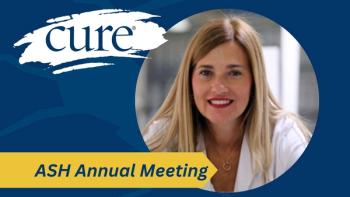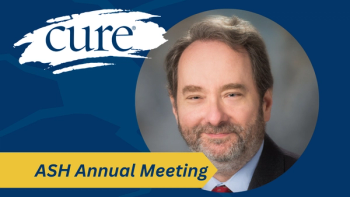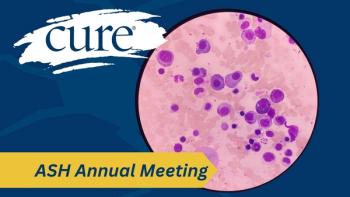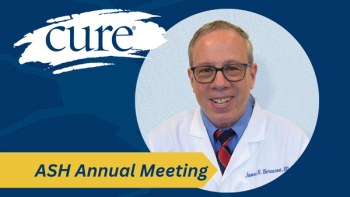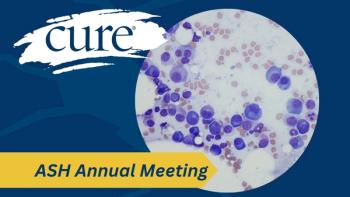
About Stem Cell Transplantation in Multiple Myeloma
Transcript:
C. Ola Landgren, MD: When it comes to the treatment of myeloma, there are a lot of details. It’s kind of a complicated algorithm, with a lot of different steps. Many of these terminologies that are included are quite old. They actually go all the way back to the 1980s. At that time, people started talking about induction treatment. They used combinations of medicines. Then, they had developed, in the United Kingdom in the mid-1980s, what’s referred to as high-dose melphalan. This was later called autologous transplantation. So, we collect the individual person’s stem cells, we give a high dose of chemotherapy, and give back some of the stem cells. You have had this type of treatment—this transplant.
Aurora Torres: Yes, I have.
C. Ola Landgren, MD: So, it’s called transplant, but it’s really not a transplantation in the correct way of using the word “transplantation.” It’s really chemotherapy with melphalan. The cells are being rescued before melphalan is given, and then part of them are given back so that you can recover from the chemotherapy. So, it’s really chemotherapy—it’s not transplantation. It’s called transplantation, but it’s chemotherapy.
Aurora Torres: Right.
C. Ola Landgren, MD: There is a transplantation, which is rarely used in myeloma, called allogeneic transplantation. That’s something that you have not done and most likely will probably not do. This is when another person’s immune system is replacing that of the person who has myeloma. It can be used for other diseases, as well, like leukemia or lymphoma or other diseases. We also have the new CAR [chimeric antigen receptor] T-cell therapies, where you take out the person’s own cells, but they are reprogrammed and given back. So, there are different types of cell therapies that can be used. The most common is this autologous transplantation, which is really chemotherapy with melphalan. That’s what you had.
The first step would be to do the induction therapy to bring down the disease. This is followed with the transplantation, or melphalan chemotherapy. That is also referred to as “consolidation.” So, if we just zoom out from 1980 and onward and look at what those drugs—these phases—actually do, they do the same thing. They just bring down the disease. If I look back to when I started treating patients with myeloma several years ago, the combination therapies were quite inferior. Probably 15% or so of patients really had a good response, and if melphalan was given, another 10%, 15% could have additional benefit from it. So, if we look at the new therapies that we have today—if we just give good combination induction therapy—there actually are some patients who go into a complete response. They’re asking, “Do I really need that melphalan chemotherapy—the transplantation?” These are things that we see every day in clinic.
There are some people in whom some disease is left. In your case, you had disease left. About half of the people have some disease left. Then, we would strongly recommend that you consider the transplantation. In your case, you went through the transplantation. What was your experience, after or while you got it?
Aurora Torres: Well, I had read a lot about it. I had spoken to a lot of people about it and had gotten different opinions. I figured that the only way for me to know was to go and have it done, because everyone has a different experience. I needed it, and I felt that I should go through with it. It was painful in a lot of ways. I had a lot of side effects from it. I had diarrhea, vomiting, and nausea. There was a combination of bad side effects that I had from it.
C. Ola Landgren, MD: How long did it last?
Aurora Torres: It lasted for quite a while—most of the time that I was there. I was there, in the hospital, for almost a month. They didn’t let me go until I was drinking and until I could keep food down. That took a long, long time. Then, when I went home, the recuperation period was rough, too. I still experienced a lot of side effects. The nausea kept on for quite a few months. When I came to you after the 100 days…
C. Ola Landgren, MD: That was 3 months out.
Aurora Torres: Yes. I was better already from the nausea. I would experience it sporadically.
C. Ola Landgren, MD: I remember that.
Aurora Torres: But not all the time. In retrospect, it was not a good experience, but I always kept the result in the back of my mind.
C. Ola Landgren, MD: You said that you reached out to a lot of people. They gave you different versions of what it was like…?
Aurora Torres: Correct.
C. Ola Landgren, MD: So, what version would you give?
Aurora Torres: Well, the version that I’d give is, it’s a rough protocol, but it’s worth it in the end, because it hopefully kills off a lot of the remaining bad cells that are there—and you get a regrowth of new ones that, hopefully, will be better.
C. Ola Landgren, MD: How long did it take you to go back to your kind of baseline—to full recovery?
Aurora Torres: It took a long time. It took about 6 to 9 months.
C. Ola Landgren, MD: High-dose chemotherapy with melphalan, or autologous transplantation, as I mentioned before, was developed in the 1980s, in the United Kingdom. It is commonly used around the world. Patients who have residual disease after the induction chemotherapy clearly have a lot of benefit, if they consider doing this therapy. There are some people who either refuse to do it or cannot tolerate it, for various reasons. They may have comorbidities that could involve the heart or the lungs or the kidneys. They just cannot do that type of therapy. It would be too toxic. It could actually be life endangering, for some people. Age, of course, can impact people very differently. You can have a higher numeric age and still be in good shape—then you could actually be a candidate for the procedure. But I think as a round number—around age 75 or so—you probably would consider offering patients a transplantation if we think that there could be a benefit.
On the flip side, if I look at the literature right now, and I look at patients who come to ours and other programs around the world, an increasing number of patients are asking, “Do I really need to do the transplantation after I have received the most modern combination induction therapy?” Many times, they can be completely free from disease with the new combination therapies. The irony is that we can actually offer the transplantation, increasingly, to older patients, but fewer patients may choose to do it as we move into the future. This is certainly an area where there will be new developments and a lot of research. I think the field is changing a lot, heading into the future.
Transcript Edited for Clarity

